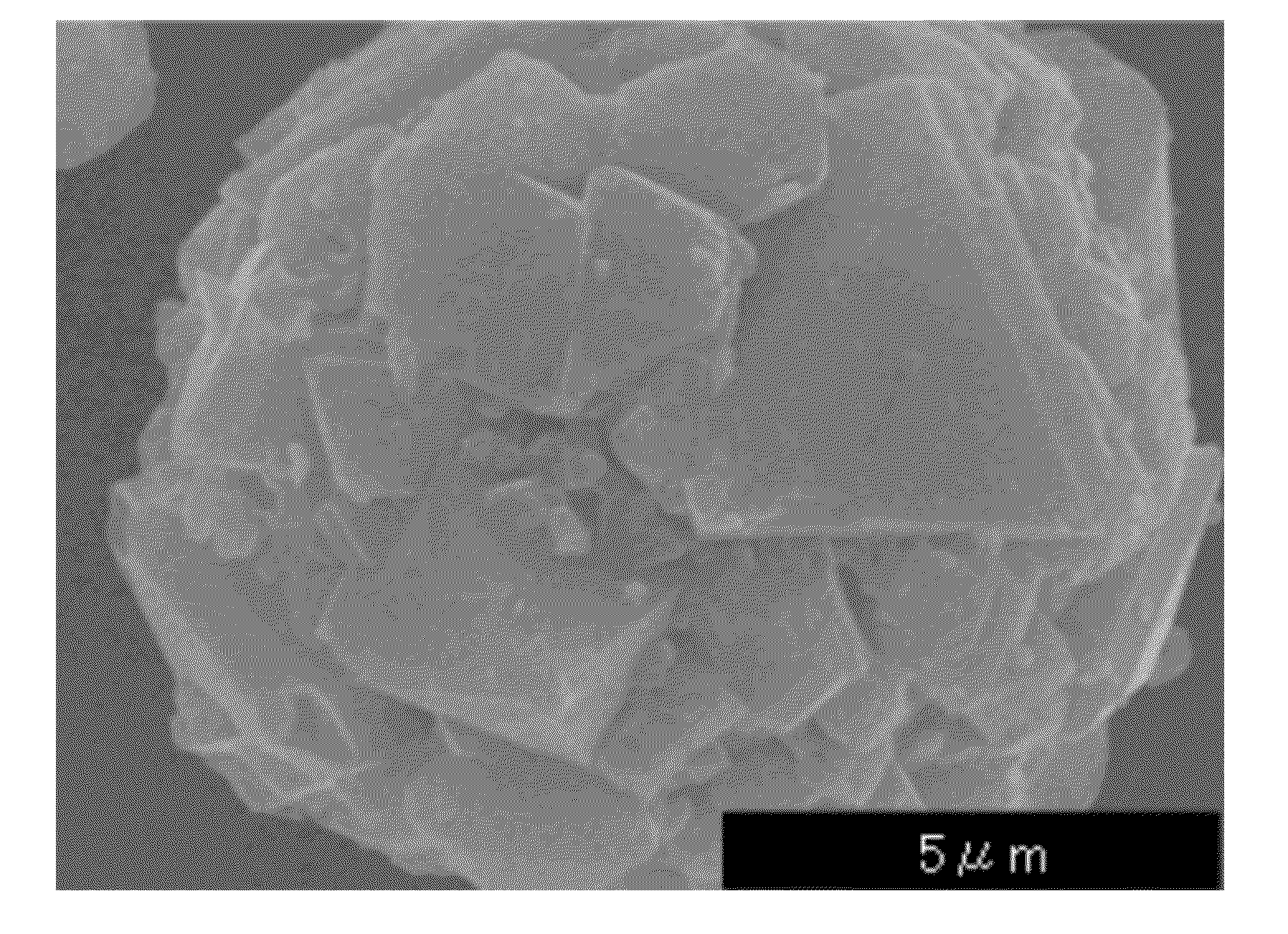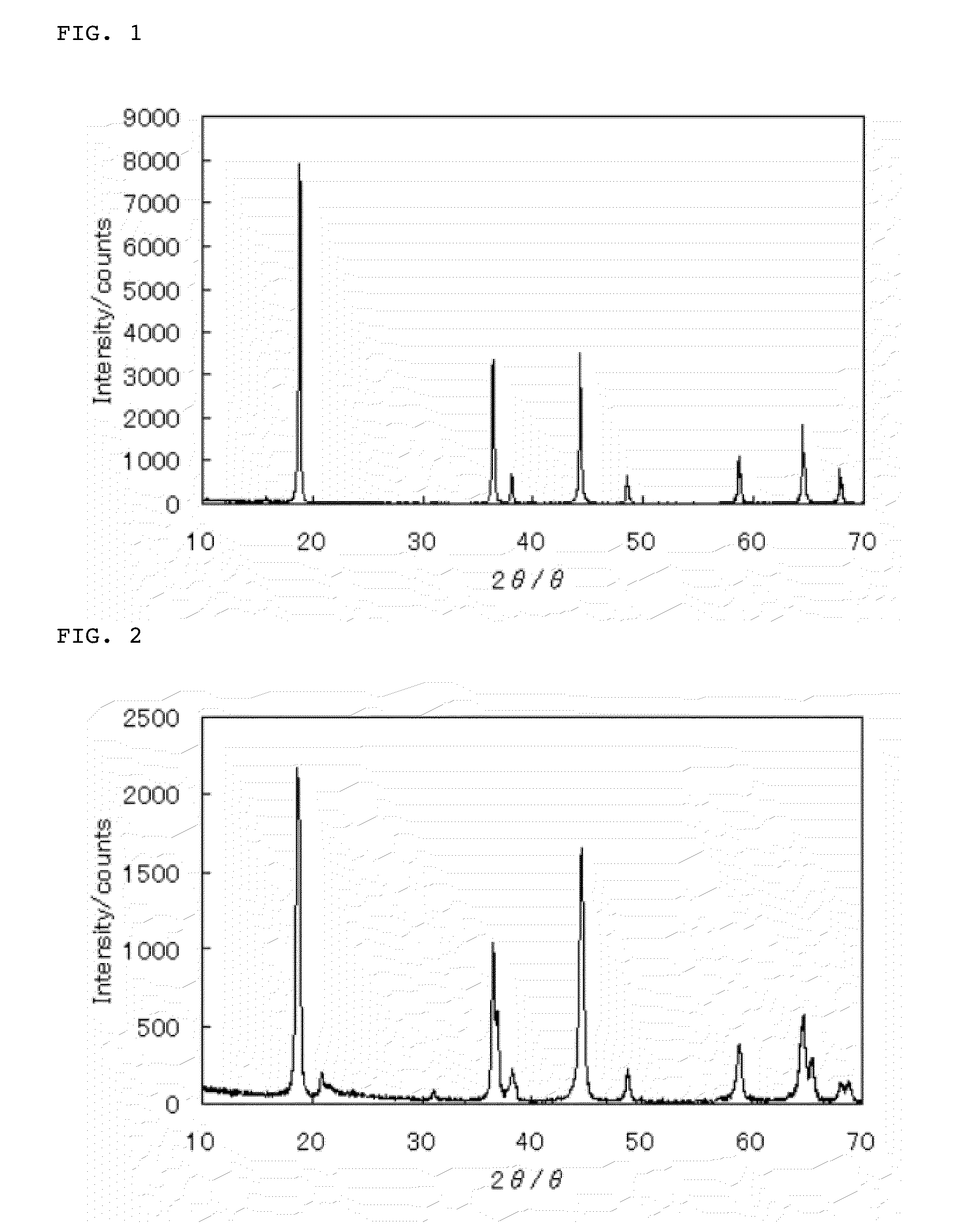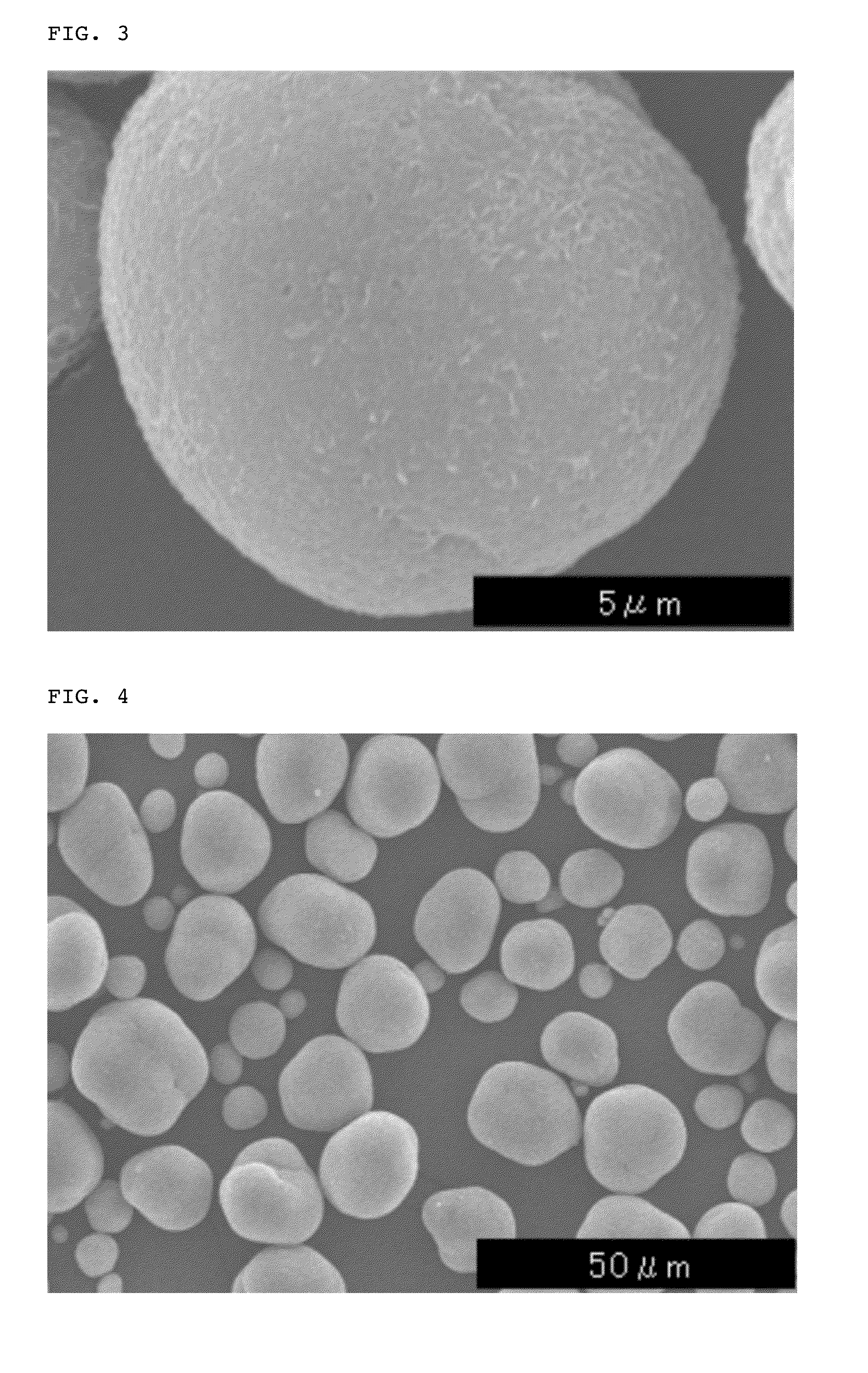Positive electrode active substance precursor particles, positive electrode active substance particles and non-aqueous electrolyte secondary battery
a technology of active substances and precursor particles, which is applied in the direction of batteries, nickel compounds, cell components, etc., can solve the problems of low discharge voltage and discharge capacity, sub>tends to exhibit low discharge voltage and tends to be deteriorated in thermal stability, and achieves high discharge voltage and large discharge capacity.
- Summary
- Abstract
- Description
- Claims
- Application Information
AI Technical Summary
Benefits of technology
Problems solved by technology
Method used
Image
Examples
example 1
[0095]A sealed type reaction vessel was charged with 14 L of water, and an inside of the reaction vessel was maintained at 50° C. while flowing a nitrogen gas therethrough. Further, a 1.5 M Ni sulfate / Mn sulfate mixed aqueous solution, a 0.8 M sodium carbonate aqueous solution and a 2 M ammonia aqueous solution were successively added into the reaction vessel while strongly stirring such that the pH value of the resulting solution was adjusted to 8.2 (±0.2). During the reaction, a filtrate only was discharged out of the reaction system using a concentration device, whereas a solid component separated from the filtrate was retained in the reaction vessel. After the reaction was continued for 40 hr, a slurry comprising a co-precipitated product was obtained. The thus obtained slurry was filtered, and the resulting solid was water-washed with dilute sulfuric acid having a pH value of 5, and successively with sodium hydroxide having a pH value of 9 and further with pure water, and then ...
example 2
[0101]A sealed type reaction vessel was charged with 14 L of water and sealed therearound except for a raw material feed port so as to prevent entrance of outside air thereinto, and an inside of the reaction vessel was maintained at 50° C. Further, a 1.5 M Ni sulfate / Mn sulfate mixed aqueous solution and a 0.8 M sodium carbonate aqueous solution were successively added into the reaction vessel while strongly stirring such that the pH value of the resulting solution was adjusted to 8.5 (±0.2). During the reaction, a filtrate only was discharged out of the reaction system using a concentration device, whereas a solid component separated from the filtrate was retained in the reaction vessel. After the reaction was continued for 20 hr, a slurry comprising a co-precipitated product was obtained. The thus obtained slurry was filtered, and the resulting solid was water-washed with dilute sulfuric acid having a pH value of 5, and successively with sodium hydroxide having a pH value of 9 and...
example 3
[0104]A sealed type reaction vessel was charged with 14 L of water, and an inside of the reaction vessel was maintained at 60° C. while flowing air therethrough. Further, a 1.5 M Ni sulfate / Mn sulfate mixed aqueous solution, a 0.8 M sodium carbonate aqueous solution and a 5 M ammonia aqueous solution were successively added into the reaction vessel while strongly stirring such that the pH value of the resulting solution was adjusted to 8.1 (±0.2). During the reaction, a filtrate only was discharged out of the reaction system using a concentration device, whereas a solid component separated from the filtrate was retained in the reaction vessel. After the reaction was continued for 50 hr, a slurry comprising a co-precipitated product was obtained. The thus obtained slurry was filtered, and the resulting solid was water-washed with dilute sulfuric acid having a pH value of 5, and successively with sodium hydroxide having a pH value of 10 and further with pure water, and then dried at 1...
PUM
| Property | Measurement | Unit |
|---|---|---|
| molar ratio | aaaaa | aaaaa |
| specific surface area | aaaaa | aaaaa |
| particle diameter | aaaaa | aaaaa |
Abstract
Description
Claims
Application Information
 Login to View More
Login to View More - R&D
- Intellectual Property
- Life Sciences
- Materials
- Tech Scout
- Unparalleled Data Quality
- Higher Quality Content
- 60% Fewer Hallucinations
Browse by: Latest US Patents, China's latest patents, Technical Efficacy Thesaurus, Application Domain, Technology Topic, Popular Technical Reports.
© 2025 PatSnap. All rights reserved.Legal|Privacy policy|Modern Slavery Act Transparency Statement|Sitemap|About US| Contact US: help@patsnap.com



